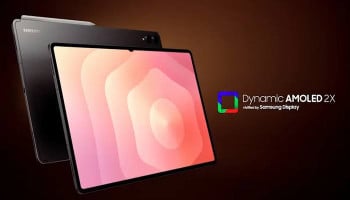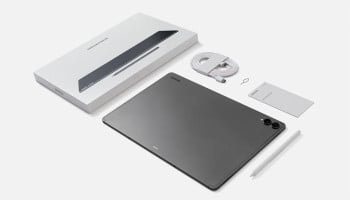
Apple's iPad lineup has become more captivating and intricate in recent years. With the introduction of the 10th-generation iPad and the M2-powered iPad Pro last year, Apple now offers three tablets in the 11-inch range that share similar designs but differ in terms of internal components and accessory compatibility. Although the 2021 10.2-inch iPad is still available, it seems to cater to a different market compared to its "next-generation" successor with the same name. Meanwhile, the iPad mini continues to hold its own in the lineup.
If you find yourself confused about which iPad to purchase, you're not alone. Choosing a new iPad is no longer a straightforward decision due to the inclusion of new features, enhanced functionality, and larger screens. Following are the top recommendations for the best iPad by Jeff Dunn, a senior commerce writer at Engadget.
Best for most: iPad Air
Among the currently available six iPad models, the iPad Air stands out as the closest to being universally appealing. In Egadget's review of the latest edition, they gave it a score of 90. The iPad Air shares the same elegant and comfortable design language as the iPad Pro but comes at a lower cost. It features a vibrant, sharp, and accurate 10.9-inch display with thin bezels and flat edges. Equipped with a USB-C port, similar to those found on MacBooks and other non-iPhone devices, the convenience of charging the Air with the same cable as your other gadgets is a notable advantage, even though it lacks Thunderbolt connectivity like the iPad Pro.
In 2022, Apple updated the iPad Air with the M1 system-on-a-chip, which is the same powerful silicon used in the entry-level MacBook Air. While it may not be the newest SoC from Apple, it still delivers exceptional performance for nearly any task, and an increasing number of iPadOS features are exclusively available to M-series chips.
The iPad Air is also compatible with Apple's top accessories, including the second-generation Apple Pencil stylus and the excellent Magic Keyboard, just like the 11-inch iPad Pro. Although these accessories add to the overall cost, they are valuable for digital artists or frequent typists.
Unbeatable value: iPad (9th generation)
If you're unable to afford the iPad Air or if you don't heavily rely on a tablet, it's perfectly reasonable to opt for the 9th-generation iPad instead. It is the most budget-friendly entry point into the iPadOS ecosystem. Although its hardware is not as advanced as the higher-end models, it is still more than capable of essential tasks.
This model follows Apple's older design language and is slightly thicker and heavier than the 10th-generation iPad and iPad Air. Due to its wider bezels, it features a 10.2-inch display. Like the 10th-generation iPad, this screen is not laminated, making it more prone to glare, although it maintains sharpness. The bottom bezel houses a Home button with a Touch ID fingerprint scanner, and the device charges via a Lightning port instead of USB-C. While its speakers may not offer the same audio quality, it is the only iPad that still includes a headphone jack, and its 12MP front camera is satisfactory (though it lacks the landscape orientation found in the 10th-generation iPad).
The 9th-generation iPad is powered by Apple's A13 Bionic chip, which is the same system-on-a-chip used in the 2019 iPhone 11 series. Although it may not offer the same fluidity and future-proofing as the M1 chip, it is more than capable of handling everyday tasks efficiently. As for first-party accessories, the tablet supports Apple's Smart Keyboard and the first-generation Apple Pencil stylus. While these options may be less convenient compared to newer alternatives, they are still available for use.
One-handed use: iPad mini
The iPad mini lives up to its name as the compact version of the iPad. It is the smallest among all the current iPad models, measuring 7.69x5.3x0.25 inches and weighing only 0.65 pounds for the WiFi model. With its 8.3-inch display, it offers a more comfortable one-handed operation experience.
Its design closely resembles that of the iPad Air, featuring squared-off edges, thin bezels, the absence of a Home button, a Touch ID sensor integrated into the power button, stereo speakers, capable cameras, and a USB-C port. Although its display is technically sharper, it offers the same maximum brightness, lamination, anti-reflective coating, and wide colour gamut. While it lacks the "Smart Connector" for connecting Apple-made keyboards, it does support the second-generation Apple Pencil.
The iPad mini is powered by Apple's A15 Bionic system-on-a-chip, the same chip found in the 2021 iPhone 13 series. Technically faster than the chip in the 10th-generation iPad model, it is more than capable of handling most tasks, although it falls behind the laptop-grade M1 or M2 chips.
For power users: iPad Pro 12.9-inch
The 12.9-inch iPad Pro occupies a unique position within Apple's tablet lineup. For 128GB of storage, it surpasses the cost of the M1 MacBook Air by $100. Though expensive, the 12.9-inch iPad Pro stands as Apple's finest tablet hardware.
The display on the Pro offers higher brightness compared to the Air and features a 120 Hz refresh rate, while the Air is limited to 60 Hz. Notably, the 12.9-inch Pro distinguishes itself from the 11-inch model by utilizing mini-LED backlighting, resulting in higher peak brightness, improved contrast, and an overall more realistic image. Additionally, the Pro is powered by Apple's new M2 system-on-a-chip (SoC), which, while not a significant upgrade over the M1 in day-to-day usage, provides greater performance potential for the future. The iPad Pro shares the same 12MP rear camera as the Air but adds a 10MP ultrawide lens, an LED flash, and a LIDAR scanner for augmented reality (AR) applications. Its 12MP front cameras are also capable of capturing portrait mode shots.
Furthermore, the Pro boasts a faster Thunderbolt USB-C port, enhanced speakers, and Face ID support. With the latest iteration, the Pro can detect when an Apple Pencil is hovering above the display, allowing for previewing of potential inputs. It offers a wider range of storage options, including configurations up to 2TB, with the 1TB and 2TB models doubling the RAM from 8GB to 16GB (at a considerably higher cost). Additionally, it is compatible with Apple's premium accessories.
| Model | Display | Processor | Storage | Battery Life | Price |
| iPad Air | 10.9-inch Liquid Retina display with True Tone and P3 wide color | A14 Bionic chip with Neural Engine | 64GB or 256GB | Up to 10 hours of web surfing or video (Wi-Fi/cellular) | $599 or $749 |
| iPad (9th generation) | 10.2-inch Retina display with True Tone | A13 Bionic chip with Neural Engine | 64GB or 256GB | Up to 10 hours of web surfing or video (Wi-Fi/cellular) | $329 or $479 |
| iPad mini | 8.3-inch Liquid Retina display with True Tone and P3 wide color | A15 Bionic chip with Neural Engine | 64GB or 256GB | Up to 10 hours of web surfing, video, or music (Wi-Fi/cellular) | $499 or $649 |
| iPad Pro 12.9" (5th gen) | 12.9-inch Liquid Retina XDR display with ProMotion, True Tone, and P3 wide color | Apple M1 chip with Neural Engine | 128GB, 256GB, 512GB, 1TB, or 2TB | Up to 10 hours of web surfing or video (Wi-Fi/cellular) | $1099, $1199, $1399, $1799, or $2199 |
DISCLAIMER: The prices are taken as of August 29, 2023, and are subject to change over time.
















